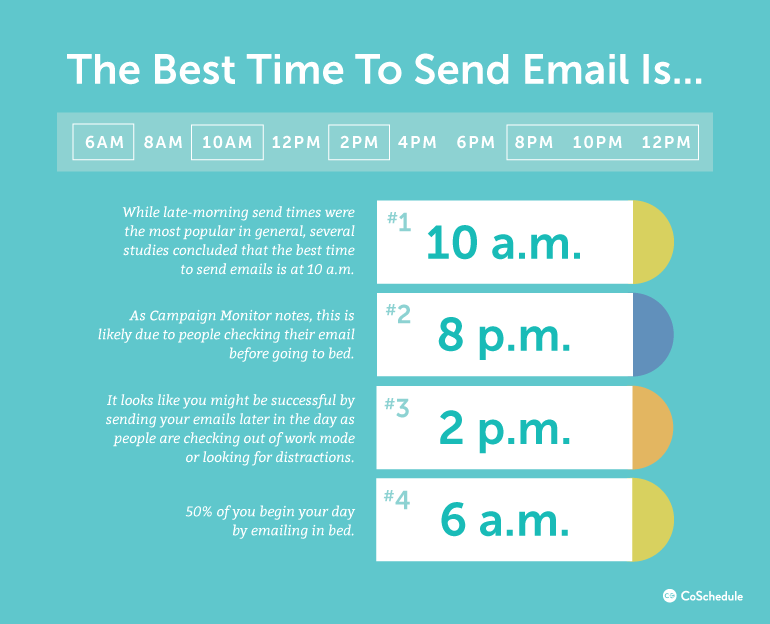Is There Really a “Best Time” to Send an Email Campaign?
According to recent study provided by Emailvision, campaign send time isn’t as significant as many of us believe. In their own words:
“While email open and click activity vary by 10% throughout the day, this does not imply that campaign success will be sensitive to the precise time of send.”
According to Emailvision, the location of an email in the inbox is relatively unimportant. A campaign has an identical probability of getting opened and read whether it is at the top of the inbox or 10 messages below.
They feel that there are many more powerful aspects at play when it comes to deciding the effectiveness of an email, such as:
- The subject line and the “from” name
- Relevance of content
- Your previous email experience
- Brand involvement and loyalty
And we tend to concur. In their essay, ‘Insights on the Worst Day to Send,’ the guys at Email Marketing Reports back up the notion that send time is insignificant.
In a research that compared data from emails sent on the ‘worst’ day of the year (New Year’s Day) to outcomes from earlier campaigns, they discovered an open rate variation of just “2.7 percentage points, or 6.6%.”
These rates are negligible and significantly less detrimental than, say, sending an email with an unobtrusive call to action.
When is the optimum moment to convey a message to your target audience?
While studies have been conducted to determine the overall optimal time to send email marketing, actual timings will depend largely on your brand’s specific target.
For example, although Monday may be the greatest day for general public open rates, your brand may be geared toward a certain niche for whom Thursday is the ideal day to send.
This additional uncertainty may seem to be bothersome, but there are strategies to identify the precise moments to reach your audience for the greatest outcomes.

One of these ways is straightforward: research. What you’ll want to search for are the times when your brand’s target audience is most likely to read emails.
Marketers and advertisers, for example, are more likely to check emails on Tuesday at 4:00 p.m. However, Monday at 3:00 p.m. is the best time for instructors.
Another method for determining your audience’s behavior is to just observe them over time. After a period of sending emails, your analytics should show you who is engaging with your emails and when.
You may also do A/B testing to see which times perform best. All you have to do is send the identical email to two distinct groups at different times. You may obtain a solid indication of your audience’s behavior based on their responses.
You may then tweak your automation to meet that timeslot after you’ve determined the ideal times to reach your target.
Conclusion
You can’t only concentrate on the content of your emails to operate an effective email marketing campaign. Though this is absolutely crucial, there are many other factors that contribute to a campaign with high engagement rates.
Timing is one of the most important factors. Sending out a fantastic email campaign is pointless if no one reads it.
While there are periods of the week and day when email traffic is greater than others, depending on this broad data can only get you so far.
Instead, concentrate on the behavior of your target audience. Your target audience has its own peculiarities and behavioral patterns that are influenced by a variety of variables.
As a result, there is no general answer regarding the optimal time to send an email to obtain a response. The only way to get the greatest outcomes is to do your own analytics and research.






Recent Comments